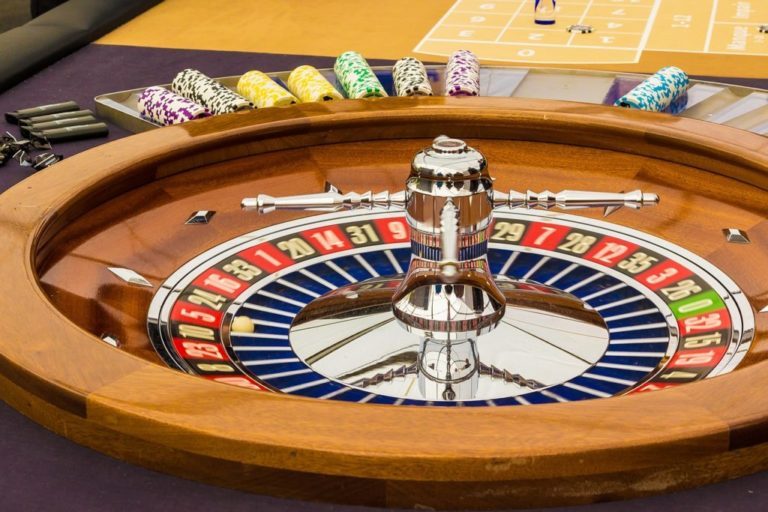Following the Martingale system in terms of popularity is the D’Alembert system. Since it involves increasing the wager following a loss, it is a negative progression. However, this roulette strategy requires reducing the wager after a win.
The idea for the strategy came from French mathematician Jean le Rond d’Alembert. He started off by stating that a coin that has previously fallen on Tails would be more likely to land on Heads in the future. This notion is known as the “gambler’s fallacy.”
The gambler’s fallacy, sometimes referred to as the Monte Carlo fallacy is the misconception that if a particular outcome occurs frequently throughout time, it will be less likely to do so in the future. This is obviously not the case because it is impossible to predict, hence the likelihood stays the same. Simply put, there is no way to forecast or control the outcome. Consider the coin toss, for instance. There is a 50/50 chance that the outcome will be either heads or tails.
The strategy was used in gambling in the late 18th century when players would up their bets after losing in the hopes that they could make up their losses with subsequent wagers. The D’Alembert technique, which is still in use today, soon gained popularity as a roulette strategy. It is also used in many other casino games.

How the D’Alembert strategy works
One of the similarities between the D’Alembert strategy and the Martingale is that both are intended to be employed with bets that have a 50% chance of winning, or the so-called “even” bets. The D’Alembert betting system has a negative progression, which is the other similarity.
The D’Alembert strategy requires you to raise the wager following a loss. However, this system requires you to increase your stake by one unit rather than double it when you lose, in contrast to the Martingale system. On the other hand, you need to reduce your bet by one after a win.
Since it was first introduced, the strategy has undergone numerous modifications. None of these modifications, though, gained enough support to become a new strategy. Nevertheless, we’re bringing them up so you can determine if you’re interested in them or not.
One modification is to change the bets so that they are increased and decreased by two or more units as opposed to one base unit. This is much riskier since you run the risk of losing a lot of money, but you also run the chance of making a lot of money.
Another adjustment is to pick a stake level at which you will stop raising the stake and go back to the fundamental unit to begin a fresh progression. In this manner, there is less likelihood of quickly running out of money.
How to play roulette with the D’Alembert strategy
There are a few steps you should do in order to use the d’Alembert strategy effectively in roulette. The first stage for players is to choose a betting amount that they feel comfortable with and will use as a base unit. The best approach is to just choose the minimal amount listed in the table. For the sake of clarity, we’ll use $10 as the player’s chosen wager in our example. Remember that based on the bankroll you have in mind, you can start higher. But keep in mind to choose a value well below the maximum allowed by the table. The simple explanation for this is that if you go too high, you can reach the table maximum and won’t be able to follow the system all the way through. The word “unit” will be used to designate the wagering amount in the example that follows.
The d’Alembert system requires players to place outside or even money bets, just like the Martingale. Odd/even or black/red are your best bets to place when employing the D’Alembert strategy.
So once you decide what are you betting on, place one unit ($10) on it. If you win that bet, wager another base unit. However, if you lose, up your bet by one unit in the subsequent round. As a result, you now have two units ($20) on the next round. Increase the following wager by one unit if you lose again. Therefore, your wagering amount will grow by one unit for each time you lose. On the other hand, if you win, your wagering amount will be reduced by one unit. Even if you are having a long winning streak, keep in mind that you cannot go below one unit.

Advantages of the D’Alembert strategy
This article has already covered the d’Alembert method’s principal benefit. It is one of the safest betting strategies when compared to the Martingale system. By playing roulette slowly and methodically, you can protect your cash.
No Prior Knowledge Required: The D’Alembert Strategy is easy to understand and apply to any casino game. You don’t need any prior knowledge or experience with strategy. For you to use this simple strategy, all you need is some familiarity with the game.
Lower bankroll: The D’Alembert strategy requires less capital at the beginning because of the progression’s inherent safety.
Win Back Losses: It is considerably simpler to win back losses and make a tiny profit because you are increasing the stake by one unit after each loss.
Less Risk: Compared to many other systems, the D’Alembert has low volatility. It is less dangerous than the other tactics because you are not required to make really huge bets.
Table Limit: With this strategy, it is almost hard to reach the table limit after a few lost rounds.
Disadvantages of the D’Alembert strategy
There are no assurances when using the D’Alembert strategy or any other strategy in games of chance.
The fact that the house always has the advantage is the first and most significant drawback. Your chances of winning are lowered by the house edge. The D’Alembert method, like any other, can only profit from winning streaks and has no effect on lowering the house edge.
The D’Alembert strategy is low-risk since you only wager little amounts and gain small amounts. You shouldn’t anticipate making a lot of money. It could be challenging to make up all of your losses if you’ve had a long losing run. This approach requires patience, so if you want results right away, look elsewhere.
Reverse D’Alembert system
The D’Alembert strategy has a reverse counterpart, as do the majority of tactics. Since the D’Alembert is a method for negative progression, the Reverse D’Alembert is a system for positive progression. So, everything will need to be done backwards. Simply said, after a win, you increase your wager by one unit, and after a loss, you reduce it by one unit. As a result, the Reverse D’Alembert method is far riskier than the other one and only pays off when you’re winning.
Play roulette in Nigeria
For roulette, the D’Alembert strategy was developed particularly. Although it is still regarded as a roulette method, it is now utilized in a number of different games.
The casino’s inherent statistical advantage, known as the “house edge,” enables it to turn a profit over time. The green zero on the wheel in European and French roulette, as well as the zero and double zero pockets in American roulette, are clear indicators of the house edge in roulette games. Due to the double zero, American roulette has a house edge of 5.2632%t; European roulette has a house edge of 2.7027%.
Follow these steps to start employing the d’Alembert strategy in roulette:
- From our list, pick one of the top online casinos in Nigeria, sign up, and deposit money.
- Decide which variant of online roulette you want to play.
- Select your base unit. You can increase or decrease your bets with this unit.
- Choose to bet on red/black, even/odd, or high/low.
- After each win, reduce the stake by one unit.
- If you lose, increase your stake by one unit.

